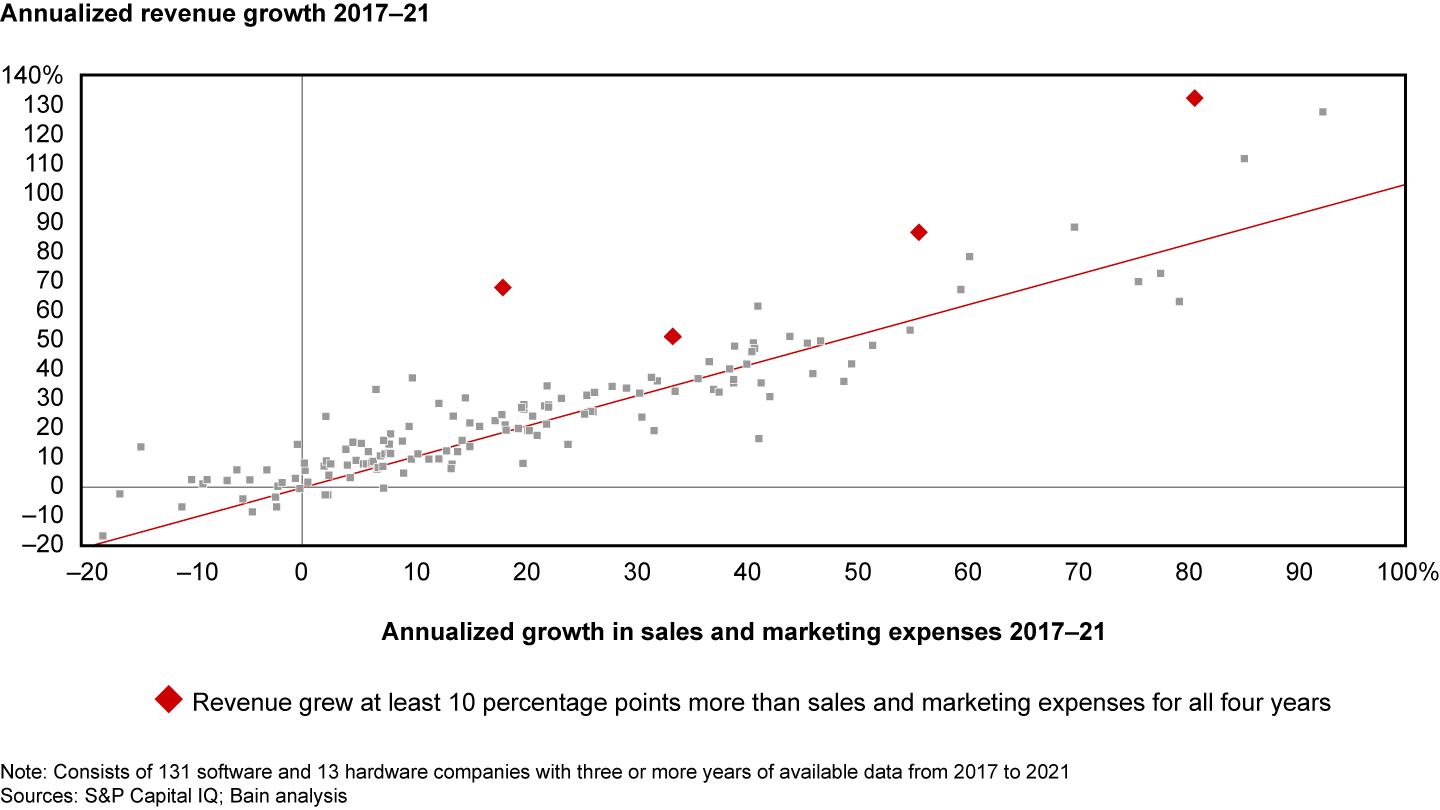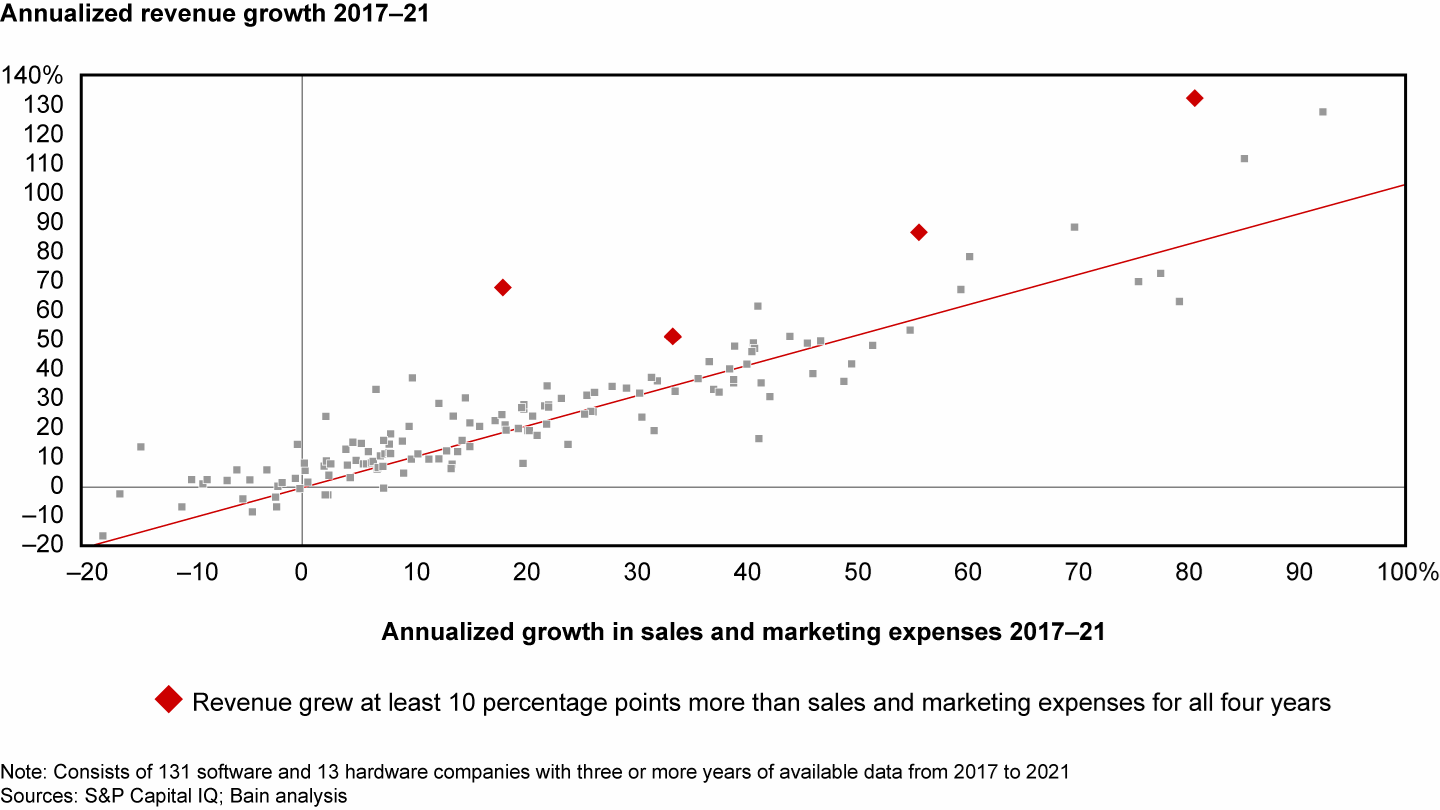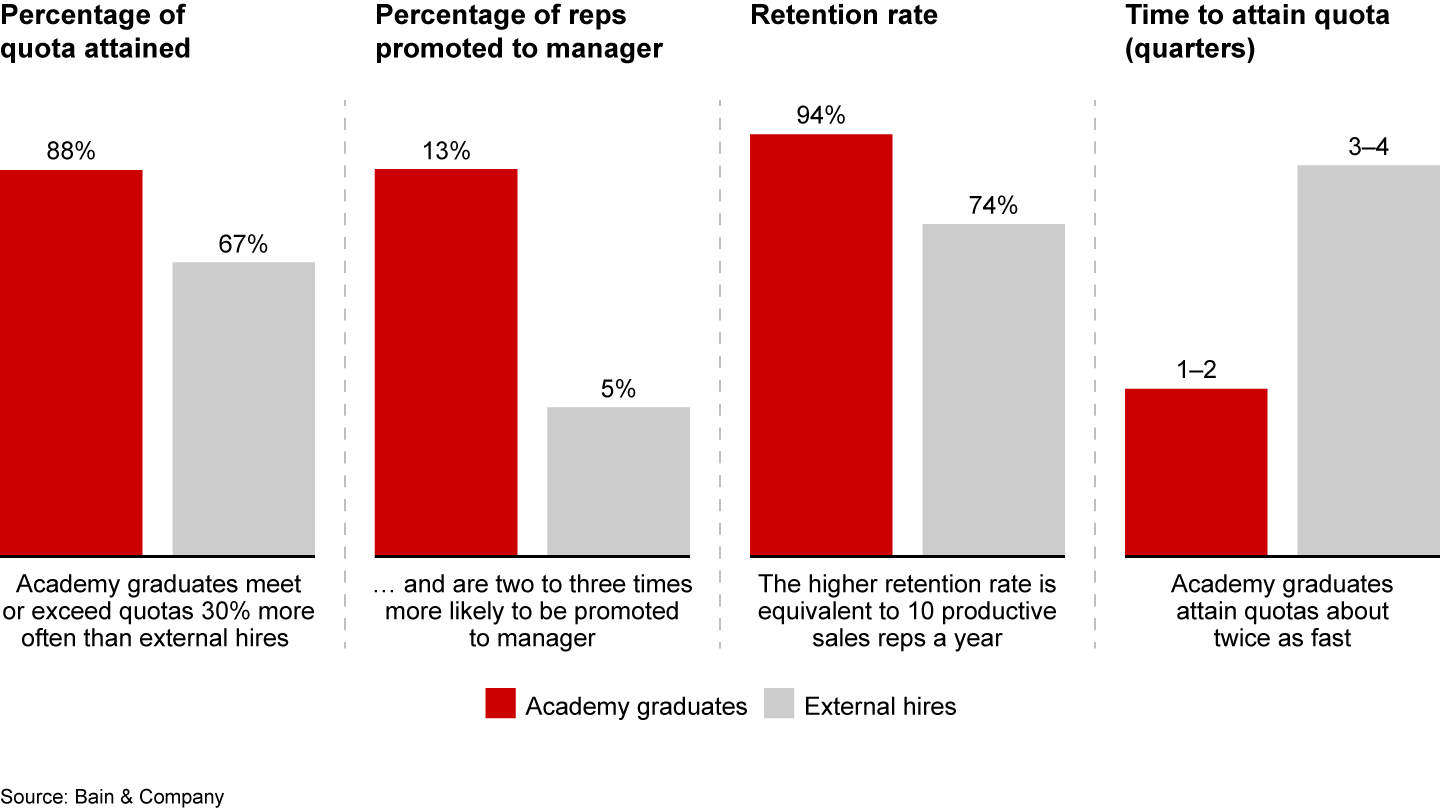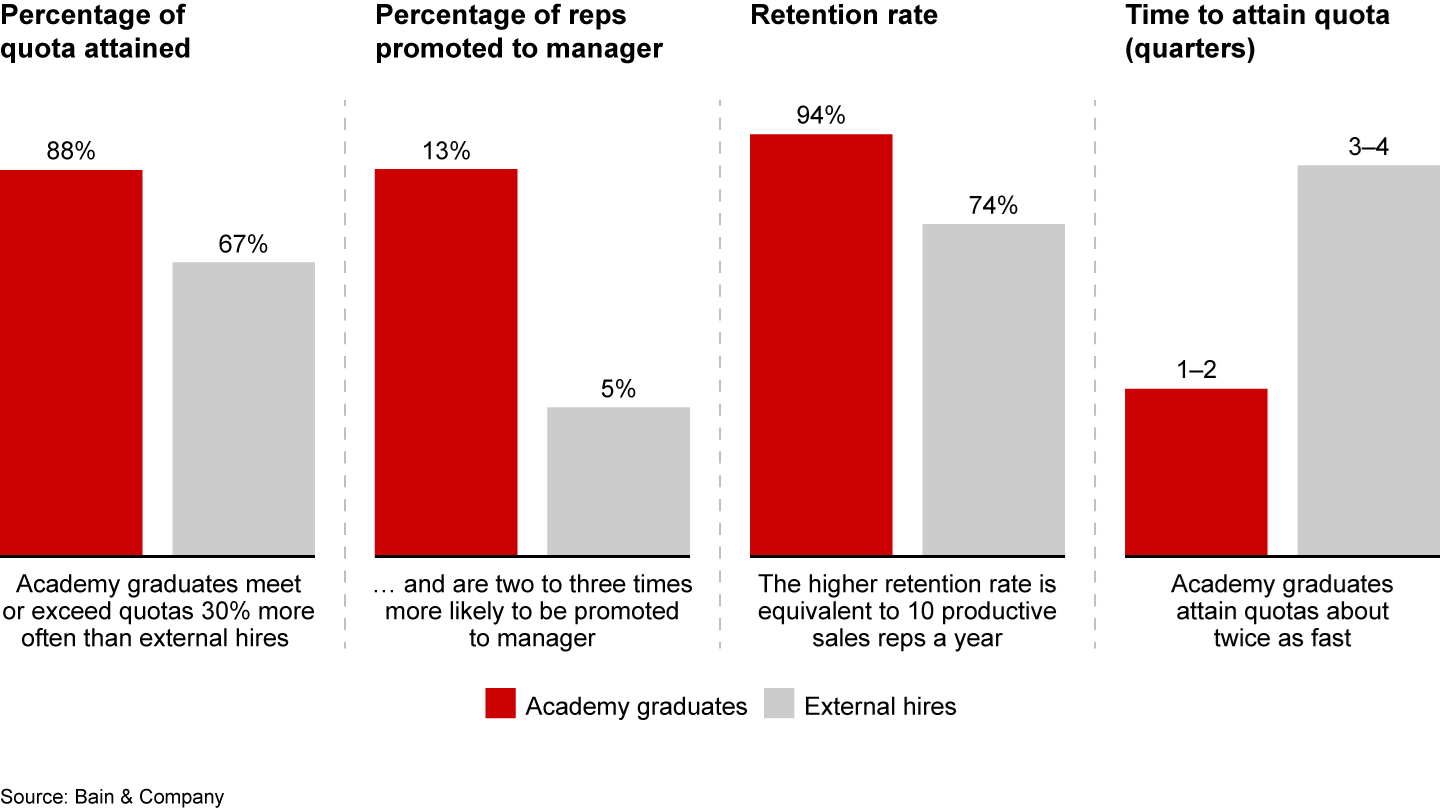Technology Report

Executive Summary
- Only one in five technology companies increase revenue 10 percentage points faster than sales and marketing expenses, and only 3% do so consistently over four years, according to Bain research.
- Productivity leaders continuously improve the sales coverage model by taking four specific steps.
This article is part of Bain's 2022 Technology Report.
One ratio has for years been the gold standard of long-term success in technology: revenue growth that exceeds growth in sales and marketing expenses. While challenging to achieve, some companies nevertheless do it, and many others aim to (see Figure 1). Now, with the significant recent drop in tech valuations, a tighter funding environment, and a less experienced salesforce due to the Great Resignation, it’s that much more important for tech companies across the board to grow without big increases in spending.
Bain & Company research has found that the median productivity for technology companies is basically flat. Only one in five grow revenue 10 percentage points faster than sales and marketing expenses in a given year. And only 3% do that consistently over four years.


Today, many executives believe the route to the top of that chart lies in some combination of better training, generating demand, and deploying one or more of the nearly 10,000 digital sales and marketing tools available today.
One thing not often on their list: the sales coverage model. It’s not surprising that following the disruption of Covid-19 and the rapid introduction of virtual selling, many executives hesitate to revisit their coverage model yet again, but productivity winners recognize the value of doing just that. They recognize that getting the right people focused on the right activities for the right customers at the right point in the sales cycle is a dynamic process that benefits from regular tuning. It’s an approach that reduces attrition, gets new sales reps up to speed quickly, and cost-efficiently ensures that the right sales experts connect with customers at the right point in their journey.
Four areas of coverage model opportunity
Many elements of coverage models can be optimized, but leading companies consistently do four things.
Streamline and simplify specialty sales coverage. Growth through acquisition or new product launches often leads to the creation, and eventual proliferation, of specialized sales organizations. While initially important, if left alone, these roles often rust in place, leading to overlapping responsibilities for sales reps and frustration for both customers and reps. Once the salesforce is broadly knowledgeable about the new products or buyers, sales teams can collapse specialist organizations and avoid this issue. This streamlining improves the customer experience, and the reduction in total interactions per customer can unlock significant team productivity. When, a few years after acquiring EMC, Dell merged the server and storage specialist teams in its corporate segment, rep productivity jumped approximately 20%.
Structure inside and outside sales roles to reduce travel and make it possible to cover more accounts. One of the many lessons from the pandemic is that inside sales reps can be as or more productive than outside reps when they put the time they aren’t traveling into customer interaction at more accounts. Specialists or presale reps may find it easier than account executives to shift to these inside sales roles, since they typically aren’t the primary relationship owner. A strong inside sales group ensures customers can work with experts on any topic, no matter where they’re located, improving customer service and bringing real value to the company, often at a lower cost.
Train new reps at inside sales academies. In a world where talent is scarce and attrition increasing, a best-in-class inside sales academy that feeds the account executive pipeline is enormously valuable. Time in a role is the single biggest contributor to rep productivity, according to Bain research, with every two percentage points of attrition correlated with a one-percentage-point drop in productivity.
When one hardware company built its sales development program, it had a “rookie ramp” of roughly 12 months. That’s how long it took new reps to reach their steady state of productivity. With many sales reps new to the job due to spiking attrition and talent shortages across the industry, the company built a well-designed inside sales academy to strengthen its bench (see Figure 2). Graduates of the academy reached their quotas twice as fast as external hires and met or exceeded those quotas 30% more often. They were significantly more likely to stay with the company and more than twice as likely to be promoted to manager. Even before they took on account executive roles, the performance of these reps as inside sellers improved 30% after the training program was launched.


Maximize productivity by moving some high-cost quota-bearing roles to lower-cost and high-performing support staff. Once reps have to carry a product bag with too broad a scope, their productivity begins to suffer, and that’s an easy mistake to make when a company is growing fast. At smaller companies with high growth rates and expanding product portfolios, optimizing sales roles likely involves injecting more specialized, back-office resources into both the sales and after-sales process.
At ServiceNow, a workflow management and enterprise-operations cloud-computing platform, revenue grew more than 30% last year to $5.9 billion, while sales and marketing expense grew 24%. One of many steps that contributed to that result is an effort executives launched to ease the administrative burden on their busy sales staff. In surveys, both customers and sales staff reported that renewal planning was among their greatest struggles. So the company took a step that saved account executives as a group tens of thousands of hours and improved their job satisfaction: transferring certain data collection and renewal planning to a less-expensive team in India. Planning the renewal for customers with sunsetting products can be quite tricky. The renewal team identifies the best replacement options to offer to these customers, freeing reps to focus on other areas of customer service. And because this group in India does so much of this work, it recognizes patterns and can more efficiently identify the best options, improving customer satisfaction. As the business grows over time, these patterns can become the basis of a recommendation engine that automatically maps migration options, enabling these specialists to focus on reviewing more plans and refining migration strategies, further improving productivity.
Whatever the company’s stage of growth, sales rep productivity can be greatly improved by making the right changes to the coverage model and complementing them with initiatives and digital tools that improve individual rep productivity. By consistently growing revenue faster than sales and marketing expenses, leading companies demonstrate the benefits of systematically improving coverage models while simultaneously investing in the productivity of frontline reps. For this select few, dynamic sales coverage models and a broader approach to productivity provide a powerful competitive advantage.